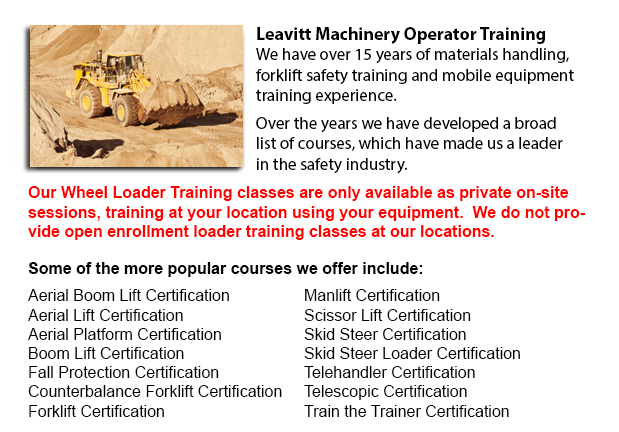
Lift trucks are obtainable in several other models that have different load capacities. The majority of standard forklifts used in warehouse environment have load capacities of 1-5 tons. Larger scale models are utilized for heavier loads, like loading shipping containers, can have up to 50 tons lift capacity.
The operator can make use of a control to be able to raise and lower the blades, which are also called "forks or tines." The operator can likewise tilt the mast to be able to compensate for a heavy load's tendency to tilt the forks downward to the ground. Tilt provides an ability to work on rough surface as well. There are annual competitions for skilled lift truck operators to contend in timed challenges and obstacle courses at local forklift rodeo events.
General use
Forklifts are safety rated for cargo at a specific maximum weight and a specific forward center of gravity. This very important information is supplied by the maker and located on a nameplate. It is vital cargo do not exceed these specifications. It is prohibited in numerous jurisdictions to tamper with or take out the nameplate without obtaining consent from the forklift maker.
The majority of lift trucks have rear-wheel steering in order to increase maneuverability. This is specifically helpful within confined spaces and tight cornering spaces. This kind of steering differs quite a bit from a driver's first experience with various vehicles. In view of the fact that there is no caster action while steering, it is no needed to utilize steering force so as to maintain a constant rate of turn.
Unsteadiness is another unique characteristic of lift truck use. A constantly varying centre of gravity happens with each and every movement of the load between the forklift and the load and they must be considered a unit during utilization. A lift truck with a raised load has gravitational and centrifugal forces that may converge to lead to a disastrous tipping accident. In order to avoid this from happening, a forklift must never negotiate a turn at speed with its load raised.
Forklifts are carefully made with a cargo limit for the blades. This limit is lessened with undercutting of the load, that means the load does not butt against the fork "L," and likewise lessens with fork elevation. Normally, a loading plate to consult for loading reference is positioned on the lift truck. It is dangerous to make use of a forklift as a personnel lift without first fitting it with specific safety equipment such as a "cherry picker" or "cage."
Forklift use in warehouse and distribution centers
Important for any warehouse or distribution center, the lift truck needs to have a safe setting in which to accommodate their efficient and safe movement. With Drive-In/Drive-Thru Racking, a lift truck must travel in a storage bay which is several pallet positions deep to put down or get a pallet. Operators are normally guided into the bay through rails on the floor and the pallet is located on cantilevered arms or rails. These confined manoeuvres need skilled operators to be able to carry out the job safely and efficiently. Because every pallet needs the truck to go into the storage structure, damage done here is more frequent than with various kinds of storage. Whenever designing a drive-in system, considering the measurements of the blade truck, including overall width and mast width, have to be well thought out to be certain all aspects of an effective and safe storage facility.
-
Victoria Scissor Lift Certification
Victoria Scissor Lift Certification - Lots of worksites and tradespeople like for example iron workers, welders and masons make use of scissor lift platforms in order to help them reach elevated work places. The operation of a scissor lift is often s... More -
Victoria Boom Lift Safety Training
Victoria Boom Lift Safey Training - Boom lifts fall under the category of aerial lifting device or elevated work platform. Most commonly used in industry, warehousing and construction; the boom lift is really versatile that it could be used in practi... More -
Victoria Heavy Equipment Training School
Victoria Heavy Equipment Training School - HEO or likewise known as the heavy equipment operator courses would provide you with the skills and knowledge needed to be able to enter the workforce as an entry level heavy equipment operator. In this 12 w... More -
Victoria Forklift License
Victoria Forklift License - Within North America, acquiring forklift certification or a forklift license involves hands-on and classroom training. Regulatory control over licensing, certification and training for powered industrial truck operators fa... More -
Victoria Overhead Crane Certification
Victoria Overhead Crane Certification - The overhead crane training certification program is designed to be effective with all those participating regardless of language or literacy limits. The course has two parts: a classroom training session and a... More -
Victoria Heavy Equipment Ticket
Victoria Heavy Equipment Ticket - Depending on the nature of the job at hand, the type of construction equipment which a heavy equipment operator utilizes differs. Each type of machine is constructed to do specific jobs in the most effective manner c... More -
Victoria Telehandler Training
Victoria Telehandler Training - Telescopic handlers usually known as telehandlers for short, are a really popular piece of heavy construction equipment. They are usually utilized in the agriculture and construction industries. These machines have ext... More -
Victoria Zoom Boom Ticket
Victoria Zoom Boom Ticket - Zoom Boom Training focuses on properly training potential operators on variable reach forklifts. The training objectives include gaining the understanding of the equipments physics and to define the job of the operator. Th... More

Forklift Certification Victoria
TOLL FREE: 1-888-254-6157
Victoria, British Columbia
forkliftcertificationvictoria.com
Email Us
About Us


